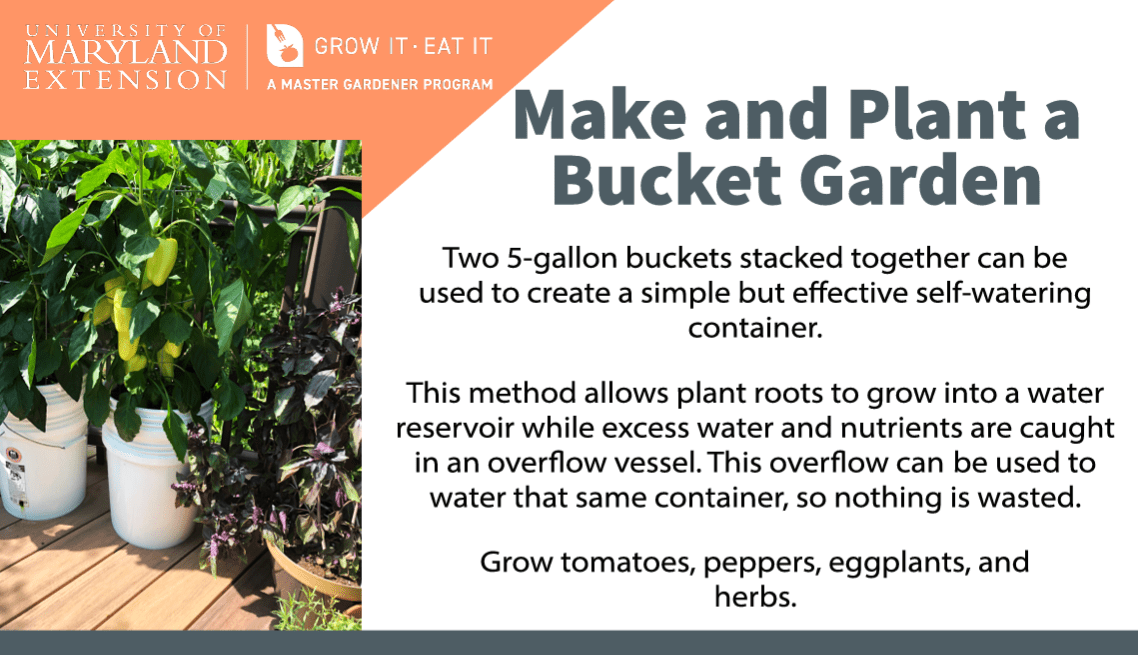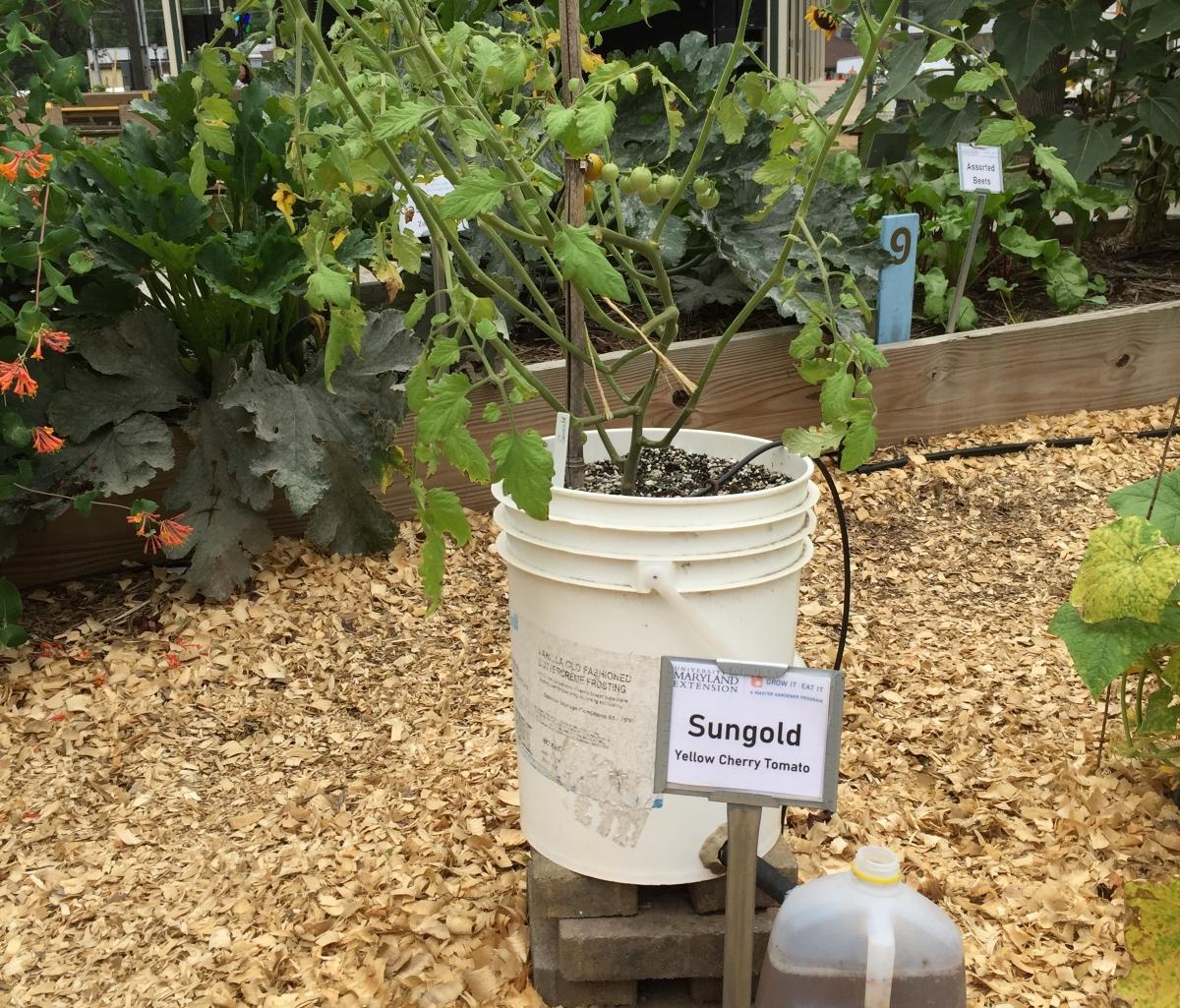“Self-watering” containers are an option for container gardening. Instead of drainage holes in the bottom, these containers have an overflow hole on one side. The growing medium sits on a perforated platform directly above a water reservoir. Plant roots grow through the medium and into the water. In most cases, water is wicked up from the reservoir into the medium. These containers can be seen as a hybrid between hydroponic gardening (plant roots growing in nutrient-enriched water) and conventional container gardening. Self-watering containers help conserve water and nutrients and make it possible to ignore your containers for a few days. A number of commercial models are available or you can make your own.
Converting a 5-gallon bucket into a mini-garden
The ubiquitous five-gallon plastic bucket is considered by some to be the most useful tool on earth, particularly in poor countries. Thousands are buried in landfills or burned each day in the U.S. Thrifty gardeners rescue them from local businesses and use them to harvest, store, and protect crops, carry water and tools, spread compost, and make compost tea. University of Maryland researchers have designed a new use: a mini-garden for vegetables and herbs that recycles water and nutrients and uses only compost as the growing medium.






